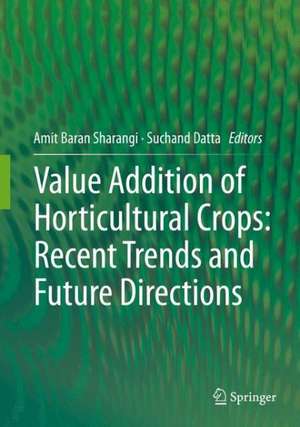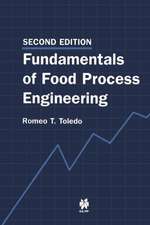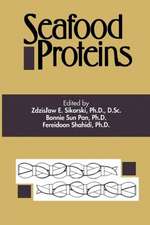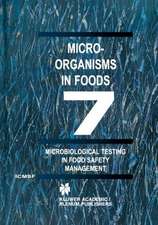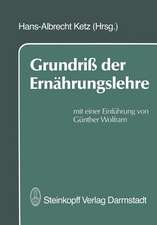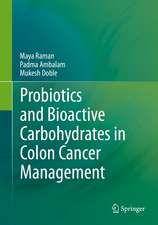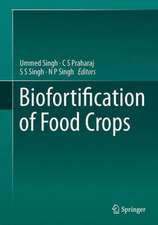Value Addition of Horticultural Crops: Recent Trends and Future Directions
Editat de Amit Baran Sharangi, Suchand Dattaen Limba Engleză Hardback – 24 mar 2015
Value addition is an important factor in the growth and development of the horticultural sector, both in India and around the world. But very little information is available on this particular aspect of horticulture. Albert Einstein famously said, “Try not to become a man of success, but rather try to become a man of value.” This message is not only true for those people who want to make more of themselves, but also for those who want their creation or product in any form to excel. And it certainly applies to horticultural crops, which are extremely perishable. It is true that loss reduction is normally less costly than equivalent increases in production. The loss of fresh produce can be minimized by adopting different processing and preservation techniques to convert the fresh vegetables into suitable value-added and diversified products, which will help to reduce the market glut during harvest season. Value-added processed products are products that can be obtained from main products and by-products after some sort of processing andsubsequently marketed for an increased profit margin. Generally speaking, value-added products indicate that for the same volume of primary products, a higher price is achieved by means of processing, packing, enhancing the quality or other such methods. The integrated approach from harvesting to the delivery into the hands of the consumer, if handled properly, can add value to fresh produce on the market. But most of the fresh produce has a limited life, although it can be stored at appropriate temperature and relative humidity for the same time. If such produce is processed just after harvesting, it adds value and stabilizes the processed products for a longer time. Preparing processed products will provide more variety to consumers and improve the taste and other sensory properties of food. This will also promote their fortification with nutrients that are lacking in fresh produce. By adopting suitable methods for processing and value addition, the shelf life of fresh produce can be increased manifold, which supports their availability year-round to a wider spectrum of consumers on both the domestic and international market. With increased urbanization, rising middle class purchasing power, changing food habits and a decline in making preserved products in individual homes, there is now a higher demand for industry-made products on the domestic market.
In spite of all these aspects, only 1-2.2% of the total produce is processed in developing countries, as compared to 40-83% in developed countries. The horticultural export industry offers an important source of employment for developing countries. For instance, horticulture accounts for 30% of India’s agricultural GDP from 8.5% of cropped area. India is the primary producer of spices, second largest producer of fruits and vegetables and holds a prominent position with regard to most plantation crops in the world. The cultivation of horticultural crops is substantially more labor-intensive than growingcereal crops and offers more post-harvest opportunities for the development of value-added products. This book offers a valuable guide for students of horticulture, as well as a comprehensive resource for educators, scientists, industrial personnel, amateur growers and farmers.
| Toate formatele și edițiile | Preț | Express |
|---|---|---|
| Paperback (1) | 620.67 lei 38-44 zile | |
| Springer India – 12 oct 2016 | 620.67 lei 38-44 zile | |
| Hardback (1) | 630.15 lei 6-8 săpt. | |
| Springer India – 24 mar 2015 | 630.15 lei 6-8 săpt. |
Preț: 630.15 lei
Preț vechi: 741.35 lei
-15% Nou
Puncte Express: 945
Preț estimativ în valută:
111.49€ • 129.89$ • 97.36£
111.49€ • 129.89$ • 97.36£
Carte tipărită la comandă
Livrare economică 17-31 ianuarie 26
Preluare comenzi: 021 569.72.76
Specificații
ISBN-13: 9788132222613
ISBN-10: 813222261X
Pagini: 358
Ilustrații: XIV, 342 p. 18 illus., 7 illus. in color.
Dimensiuni: 178 x 254 x 20 mm
Greutate: 0.84 kg
Ediția:2015
Editura: Springer India
Colecția Springer
Locul publicării:New Delhi, India
ISBN-10: 813222261X
Pagini: 358
Ilustrații: XIV, 342 p. 18 illus., 7 illus. in color.
Dimensiuni: 178 x 254 x 20 mm
Greutate: 0.84 kg
Ediția:2015
Editura: Springer India
Colecția Springer
Locul publicării:New Delhi, India
Public țintă
ResearchCuprins
1. Introduction.- 2. Preparation of Value Added Products through Preservation.- 3. Value Addition in Vegetable Crops.- 4. Value addition in spice crops.- 5. Value Addition in flowers.- 6. Flower arrangement towards value addition.- 7. Value Added Products from Medicinal Plants.- 8. Post harvest, product diversification and value addition in coconut.- 9. Product diversification of arecanut, cashew nut and oil palm.- 10. Value Addition of Fruits and Vegetable through Drying and Dehydration.- 11. Value Addition of Fruits and Vegetables through Packaging.- 12. Breeding methods for quality improvement in horticultural crops.- 13. Value addition of non-timber forest products: Prospects, constraints and mitigation.- 14. Mitigate climate change, use processed or value added harvested wood products.- 15. Essential oil: Its economic aspect, extraction, importance, uses, hazards and quality.- 16. Total Quality Management in Horticulture: Concepts and Modalities.- 17. Supply Chain Management of Horticultural Crops.- 18. Development of Women Entrepreneur through Value Addition of Horticultural Crops.- 19. Phytophthora -a member of the Sixth kingdom revisited as a threat to food security in the 21st century.- 20. Future Directions.
Notă biografică
Dr. A. B. Sharangi is an Associate Professor of eminence in the discipline of Horticultural sciences and presently acting as the Head, Department of Spices and Plantation Crops, Faculty of Horticulture, Bidhan Chandra Krishi Viswavidyalaya (Agricultural University), India. He is in the profession of teaching for about seventeen odd years. He is associated with the process of coconut improvement leading to the release of a variety Kalpamitra from CPCRI. One of his papers has ranked among the top 25 articles in ScienceDirect. He has published about 50 research papers in peer-reviewed journal, 40 conference papers, 12 reputed books as well as several book chapters published from CRC Press (USA), Nova Publishers (USA) and scores of popular scientific articles. Presently he is associated with 30 international and national journals as regional editor, technical editor, editorial board member and reviewer. Dr Sharangi has visited abroad extensively on academic mission and obtained several international awards viz., ENDEAVOUR Post-doctoral Award-2010(Australia), INSA-RSE Visiting Scientist Fellowship (UK, 2011), FULBRIGHT Visiting Lecturer Fellowship (USA, 2013), Achiever’s Award (SADHNA) etc. He has delivered a couple of invited lectures in UK, USA, Australia, Thailand, Israel and Bangladesh on several aspects of herbs and spices. He is associated with a number of research projects as Principal & Co-Principal Investigators having academic and empirical implications, He is active member of several science academies and societies like NASI, NABS, ISNS, HIS, CWSS, SAH including the New York Academy of Science (NYAS), World Academy of Science, Engineering and Technology (WASET), to name a few.
Suchand Dutta did Ph. D from Uttar Banga Krishi Viswavidyalaya. He joined his service during 2001 as the post of Lecturer in Uttar Banga Krishi Viswavidyalaya. Presently, he is serving as Associate Professor in Vegetable and Spice Crops in theUttar Banga Krishi Viswavidyalaya, Pundibari, Cooch Behar, West Bengal, India. During his academic career he guided a number of M.Sc students as chairman and published 45 research papers in national and international Journals, 5 popular articles in english and a large number of popular articles in local languages. He has participated and presented, more than 25 research papers in different National and International level seminar/symposia/conference/ World Congress in India and abroad. He was associated as Co- Principal Investigator in Central Scheme for the Development of medicinal Plant Sponsored by National Medicinal Plants Board Deptt. of ISM & H, Ministry of Health & Family Welfare, Govt. of India and associated as Scientist Integrated Programme for Development of Spices and now it is renamed Mission for Integrated Development of Horticulture from 2002 to till date. He organized one national level workshop and recently he has taken the responsibility of In-Charge, All India Co-ordinate Research Project on Spices, Uttar Banga Krishi Viswavidyalaya, Pundibari. He wrote 4 books and 3 book chapters. He has actively participated in different training programmes for the benefit of the farmers.
Suchand Dutta did Ph. D from Uttar Banga Krishi Viswavidyalaya. He joined his service during 2001 as the post of Lecturer in Uttar Banga Krishi Viswavidyalaya. Presently, he is serving as Associate Professor in Vegetable and Spice Crops in theUttar Banga Krishi Viswavidyalaya, Pundibari, Cooch Behar, West Bengal, India. During his academic career he guided a number of M.Sc students as chairman and published 45 research papers in national and international Journals, 5 popular articles in english and a large number of popular articles in local languages. He has participated and presented, more than 25 research papers in different National and International level seminar/symposia/conference/ World Congress in India and abroad. He was associated as Co- Principal Investigator in Central Scheme for the Development of medicinal Plant Sponsored by National Medicinal Plants Board Deptt. of ISM & H, Ministry of Health & Family Welfare, Govt. of India and associated as Scientist Integrated Programme for Development of Spices and now it is renamed Mission for Integrated Development of Horticulture from 2002 to till date. He organized one national level workshop and recently he has taken the responsibility of In-Charge, All India Co-ordinate Research Project on Spices, Uttar Banga Krishi Viswavidyalaya, Pundibari. He wrote 4 books and 3 book chapters. He has actively participated in different training programmes for the benefit of the farmers.
Textul de pe ultima copertă
This book combines several ideas and philosophies and provides a detailed discussion on the value addition of fruits, vegetables, spices, plantation crops, floricultural crops and in forestry. Separate chapters address the packaging, preservation, drying, dehydration, total quality management and supply chain management of horticultural crops. The book explains value addition as a process of increasing the economic value and consumer appeal of a commodity with special reference to horticultural crops. Each chapter focuses on a specific area, exploring value addition as a production/ marketing strategy driven by customer needs and preferences. But, as such, it is also a more creative field, calling for more imagination than calculated, routine work. Value is added to the particular produce item when the product is still available when the season is out and the demand for the product exceeds the available supply.
Value addition is an important factor in the growth and development of the horticultural sector, both in India and around the world. But very little information is available on this particular aspect of horticulture. Albert Einstein famously said, “Try not to become a man of success, but rather try to become a man of value.” This message is not only true for those people who want to make more of themselves, but also for those who want their creation or product in any form to excel. And it certainly applies to horticultural crops, which are extremely perishable. It is true that loss reduction is normally less costly than equivalent increases in production. The loss of fresh produce can be minimized by adopting different processing and preservation techniques to convert the fresh vegetables into suitable value-added and diversified products, which will help to reduce the market glut during harvest season. Value-added processed products are products that can be obtained from main products and by-products after some sort of processing andsubsequently marketed for an increased profit margin. Generally speaking, value-added products indicate that for the same volume of primary products, a higher price is achieved by means of processing, packing, enhancing the quality or other such methods. The integrated approach from harvesting to the delivery into the hands of the consumer, if handled properly, can add value to fresh produce on the market. But most of the fresh produce has a limited life, although it can be stored at appropriate temperature and relative humidity for the same time. If such produce is processed just after harvesting, it adds value and stabilizes the processed products for a longer time. Preparing processed products will provide more variety to consumers and improve the taste and other sensory properties of food. This will also promote their fortification with nutrients that are lacking in fresh produce. By adopting suitable methods for processing and value addition, the shelf life of fresh produce can be increased manifold, which supports their availability year-round to a wider spectrum of consumers on both the domestic and international market. With increased urbanization, rising middle class purchasing power, changing food habits and a decline in making preserved products in individual homes, there is now a higher demand for industry-made products on the domestic market.
In spite of all these aspects, only 1-2.2% of the total produce is processed in developing countries, as compared to 40-83% in developed countries. The horticultural export industry offers an important source of employment for developing countries. For instance, horticulture accounts for 30% of India’s agricultural GDP from 8.5% of cropped area. India is the primary producer of spices, second largest producer of fruits and vegetables and holds a prominent position with regard to most plantation crops in the world. The cultivation of horticultural crops is substantially more labor-intensive than growingcereal crops and offers more post-harvest opportunities for the development of value-added products. This book offers a valuable guide for students of horticulture, as well as a comprehensive resource for educators, scientists, industrial personnel, amateur growers and farmers.
Value addition is an important factor in the growth and development of the horticultural sector, both in India and around the world. But very little information is available on this particular aspect of horticulture. Albert Einstein famously said, “Try not to become a man of success, but rather try to become a man of value.” This message is not only true for those people who want to make more of themselves, but also for those who want their creation or product in any form to excel. And it certainly applies to horticultural crops, which are extremely perishable. It is true that loss reduction is normally less costly than equivalent increases in production. The loss of fresh produce can be minimized by adopting different processing and preservation techniques to convert the fresh vegetables into suitable value-added and diversified products, which will help to reduce the market glut during harvest season. Value-added processed products are products that can be obtained from main products and by-products after some sort of processing andsubsequently marketed for an increased profit margin. Generally speaking, value-added products indicate that for the same volume of primary products, a higher price is achieved by means of processing, packing, enhancing the quality or other such methods. The integrated approach from harvesting to the delivery into the hands of the consumer, if handled properly, can add value to fresh produce on the market. But most of the fresh produce has a limited life, although it can be stored at appropriate temperature and relative humidity for the same time. If such produce is processed just after harvesting, it adds value and stabilizes the processed products for a longer time. Preparing processed products will provide more variety to consumers and improve the taste and other sensory properties of food. This will also promote their fortification with nutrients that are lacking in fresh produce. By adopting suitable methods for processing and value addition, the shelf life of fresh produce can be increased manifold, which supports their availability year-round to a wider spectrum of consumers on both the domestic and international market. With increased urbanization, rising middle class purchasing power, changing food habits and a decline in making preserved products in individual homes, there is now a higher demand for industry-made products on the domestic market.
In spite of all these aspects, only 1-2.2% of the total produce is processed in developing countries, as compared to 40-83% in developed countries. The horticultural export industry offers an important source of employment for developing countries. For instance, horticulture accounts for 30% of India’s agricultural GDP from 8.5% of cropped area. India is the primary producer of spices, second largest producer of fruits and vegetables and holds a prominent position with regard to most plantation crops in the world. The cultivation of horticultural crops is substantially more labor-intensive than growingcereal crops and offers more post-harvest opportunities for the development of value-added products. This book offers a valuable guide for students of horticulture, as well as a comprehensive resource for educators, scientists, industrial personnel, amateur growers and farmers.
Caracteristici
Covers almost all aspects of horticulture towards value addition Focuses on total quality management, non-timber forest products, climate change mitigation, supply chain management and development of women entrepreneur through value addition Includes a special chapter "Phytophthora - a member of the sixth kingdom revisited as a threat to food security in the 21st century Includes supplementary material: sn.pub/extras
